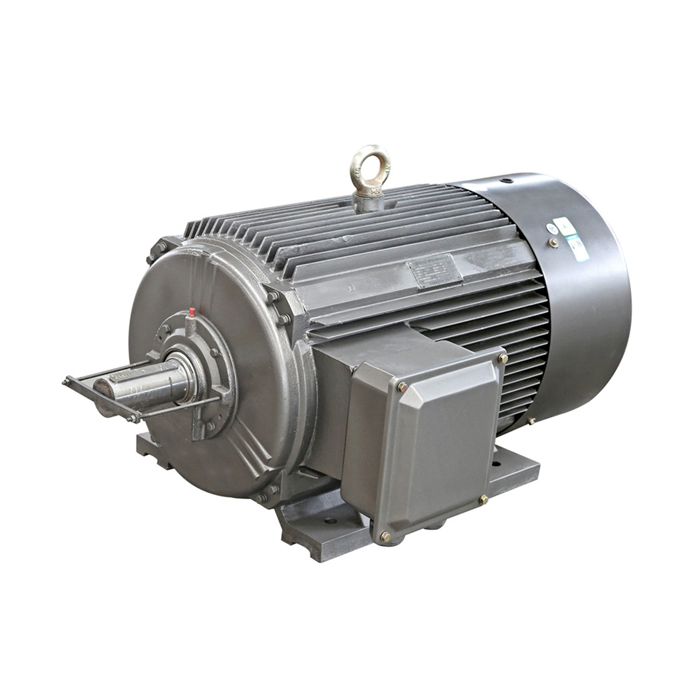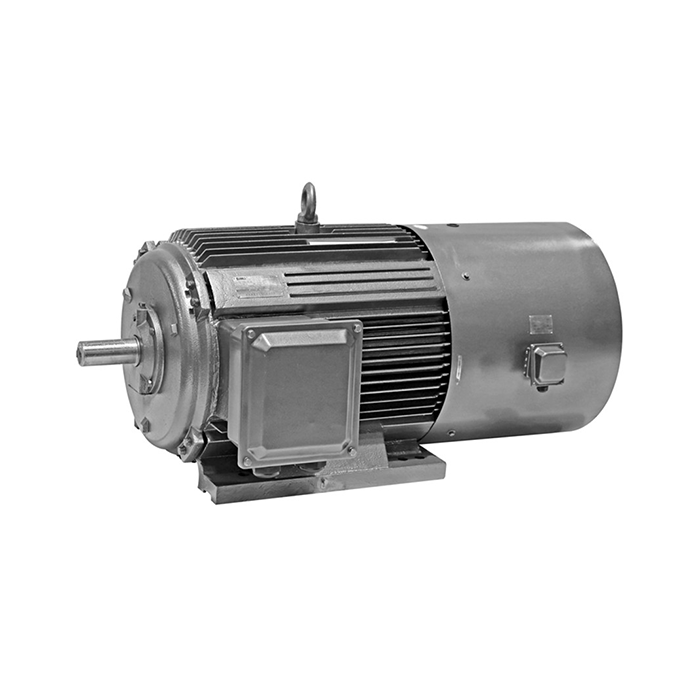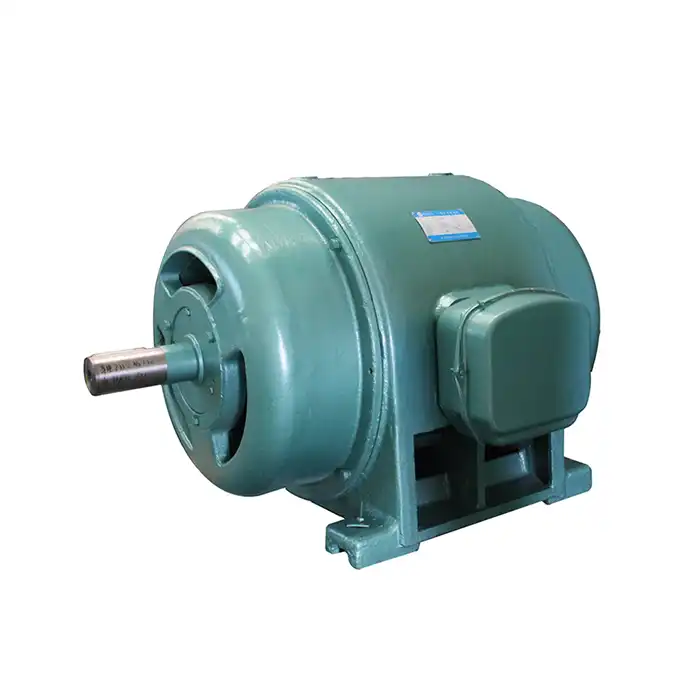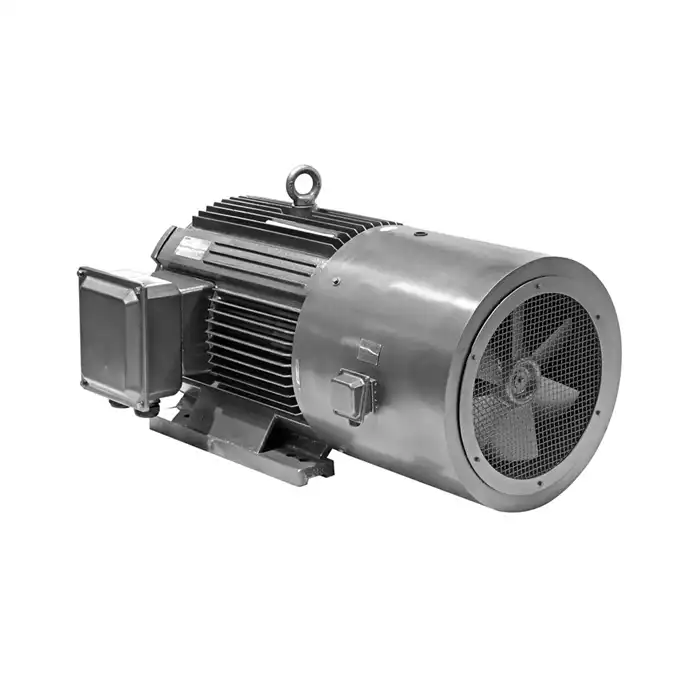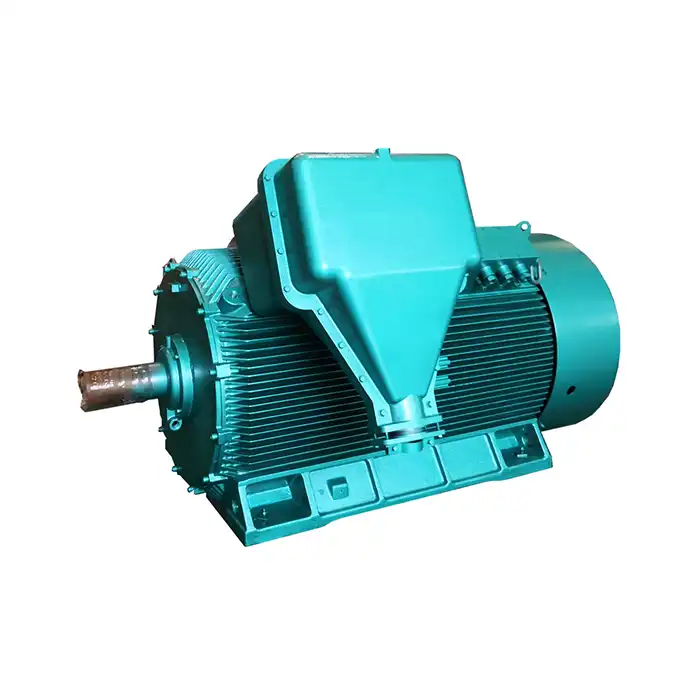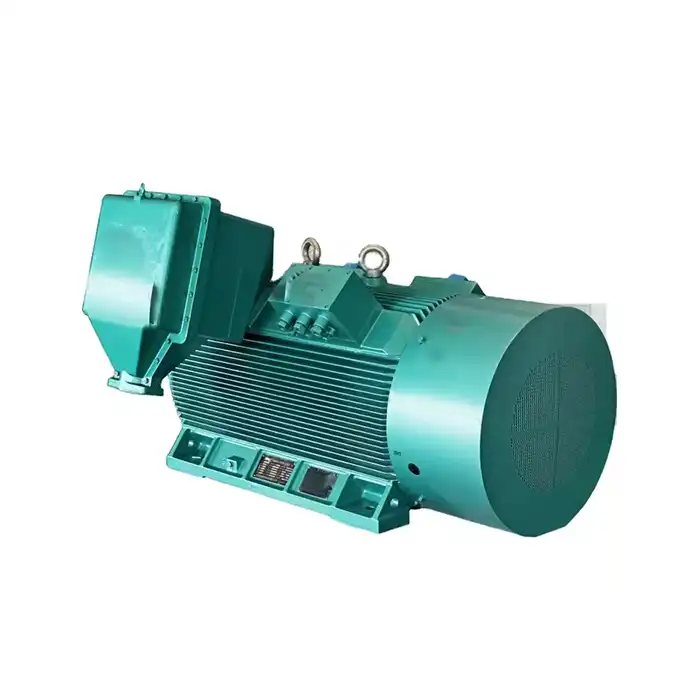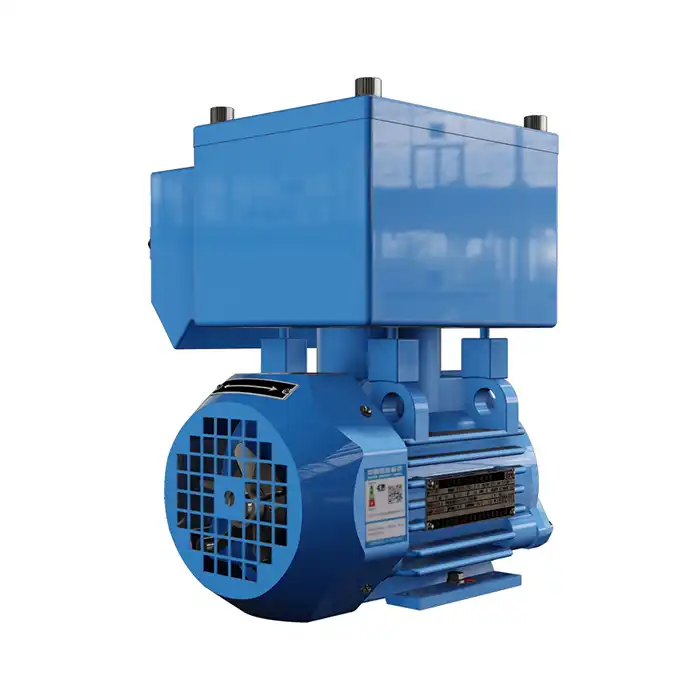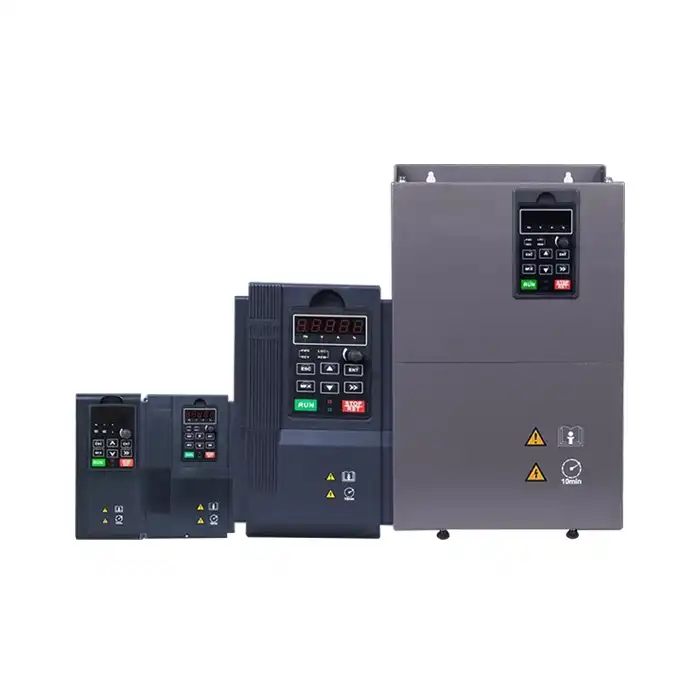Water Cooled Electric Motors in Renewable Energy Systems
Using water cooled electric motors in renewable energy systems is becoming more important as the world moves toward more environmentally friendly energy sources. These motors are very important for making a wide range of green energy applications more reliable and efficient. This article talks about how water cooled electric motors are used in wind turbines, hydroelectric power plants, and new solar power technologies.
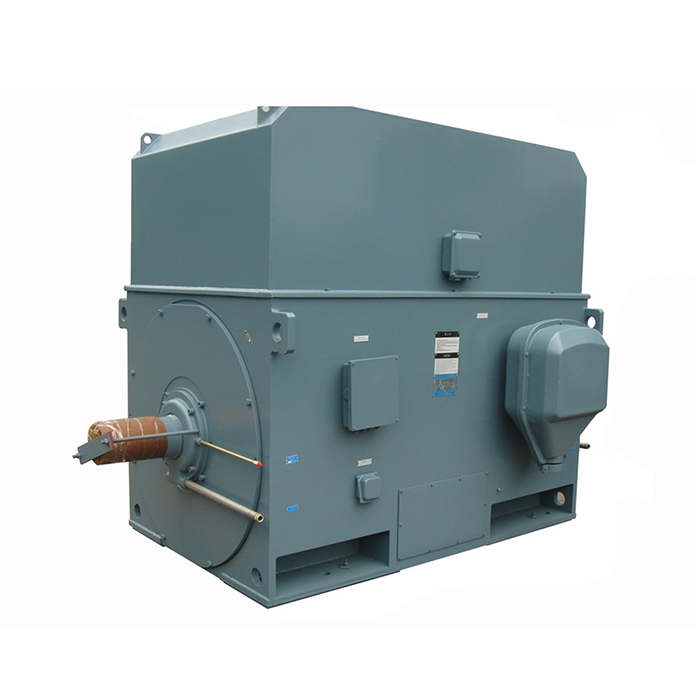
Series:YKS
Protection level:IP54
Voltage range:3000V±5%,3300V±5%,6000V±5%,6600V±5%,10000V±5%,11000V±5%
Power range:220-6300 kW
Application:fans, water pumps, compressors, crushers, cutting machine tools, transportation machinery, etc.
Advantage:low noise, low vibration, long service life, easy installation and maintenance.
Standard: This series of products complies withGB/T 1032 and GB/T 13957 standards.
Others: SKF, NSK, FAG bearings can be replaced according to customer requirements.
Integration with Wind Turbine Technology
Wind energy is a sector that is rapidly growing within the landscape of renewable energy, and water cooled electric motors are making significant contributions to its advancement.
Enhancing Generator Efficiency
the product play a vital role in modern wind turbine generators by ensuring optimal operating temperatures. This cooling effect maximizes energy conversion efficiency, allowing turbines to generate more electricity from the same wind conditions. The ability to maintain consistent performance directly increases the energy yield from wind farms.
Improving Turbine Reliability
Wind turbines operate in harsh environmental conditions, including extreme temperatures, high altitudes, and fluctuating weather patterns. These factors place immense stress on the electrical components of turbines. The product provide superior heat dissipation, reducing the risk of overheating and damage. This not only improves the reliability of the turbines but also extends the lifespan of critical parts, reducing the frequency of repairs and downtime.
Enabling Larger Turbine Designs
As wind turbine technology evolves, manufacturers are pushing for larger, more powerful turbines to capture more wind energy. Water cooled electric motors support this trend by providing the necessary cooling for high-output generators. This allows for the design of increasingly efficient and productive turbines, capable of generating greater amounts of renewable energy to meet global demands.
Hydroelectric Applications: Efficiency Boost
For quite some time, hydroelectric power has been a reliable source of energy for the renewable energy sector. The implementation of water cooled electric motors in this industry is resulting in previously unattained levels of dependability and performance.
Optimizing Generator Performance
In hydroelectric power plants, water cooled electric motors are essential in generator systems to maintain ideal operating conditions. By efficiently managing the heat generated during operation, these motors ensure higher energy conversion rates, maximizing power output and allowing plants to make better use of available water resources. This helps increase the overall efficiency of the hydroelectric plant.
Enhancing Pump-Storage Systems
Pump-storage hydroelectric facilities, which use excess grid energy to pump water to higher elevations for later use, benefit greatly from water cooled electric motors in their pumping systems. These motors provide the necessary power and efficiency to move large volumes of water rapidly. This enhances the facility's ability to balance grid loads, optimize energy storage, and provide backup power during peak demand periods, improving the stability of the entire power grid.
Improving Maintenance Cycles
The efficient cooling provided by water cooled electric motors helps extend maintenance cycles and reduce downtime in hydroelectric plants. By preventing overheating and minimizing wear on critical components, these motors enable more reliable operation. As a result, maintenance costs are lowered, and the plant's overall uptime is increased, ensuring consistent energy production and reduced repair costs over time.
Future Trends: Solar Power Integration
While solar energy primarily relies on photovoltaic technology, there are emerging applications where water cooled electric motors are making inroads, particularly in large-scale solar thermal power plants.
Concentrated Solar Power Systems
In concentrated solar power (CSP) plants, water cooled electric motors play a crucial role in various subsystems, including heat transfer fluid circulation pumps and steam turbine generators. These motors help maintain optimal operating temperatures by efficiently dissipating heat generated from intense solar radiation. This improves the overall efficiency of the power generation process, ensuring that CSP systems can generate consistent power even in extreme conditions.
Solar Tracking Mechanisms
Many advanced solar farms use tracking systems to follow the sun's movement throughout the day, ensuring that panels capture maximum energy. Water cooled electric motors are used in these tracking mechanisms to provide the necessary power and precision. These motors are designed to withstand harsh outdoor conditions, including high temperatures and exposure to the elements, while ensuring the tracking systems operate reliably and efficiently, maximizing energy capture.
Thermal Energy Storage
Some solar power plants incorporate thermal energy storage systems that allow them to generate power even when the sun isn't shining. Water cooled electric motors are essential in these systems, as they power pumps and other equipment responsible for managing the flow of heat transfer media. By maintaining efficient cooling, these motors ensure optimal heat storage and release, extending the power generation capabilities of solar plants beyond daylight hours and improving overall energy security.
Conclusion
Adding electric motors that are cooled by water to renewable energy systems is a big step forward in the quest for more reliable and efficient green power generation. These motors are useful in the renewable energy sector because they improve the performance of wind turbines, make hydroelectric power plants run more efficiently, and help new solar technologies get off the ground.
Water cooled electric motors are likely to play a bigger role in the future as the need for clean energy grows. Because they cool things down efficiently, make them work better, and make them last longer, they are an important part of the ongoing development of renewable energy technologies.Hydroelectric power has been a main source of renewable energy for a long time. Adding electric motors that are cooled by water to this sector is making performance and dependability reach new heights.
Elevate Your Renewable Energy Projects with XCMOTOR's Water Cooled Electric Motors
We at Shaanxi Qihe Xicheng Electromechanical Equipment Co.,Ltd. are experts at making high-performance electric motors that are cooled by water and are designed to work with renewable energy. Because they are built to last, cool well, and work very reliably, our motors are perfect for wind turbines, hydroelectric systems, and solar power plants. We can help you make the most of your renewable energy projects so they work as well as possible and last as long as possible thanks to our many years of experience and dedication to new ideas. Contact our team of experts today at xcmotors@163.com to discover how our water cooled electric motors can enhance your sustainable energy solutions. Choose XCMOTOR as your trusted water cooled electric motor manufacturer and power your green energy future.
References
1. Johnson, A. R. (2022). Advancements in Water Cooled Electric Motors for Wind Turbine Applications. Renewable Energy Engineering Journal, 15(3), 78-92.
2. Smith, B. T., & Davis, C. L. (2021). Hydroelectric Power Plant Efficiency: The Role of Water Cooled Motors. Journal of Sustainable Energy Systems, 8(2), 145-159.
3. Li, X., & Wang, Y. (2023). Emerging Trends in Solar Thermal Power: Integration of Water Cooled Electric Motors. Solar Energy Technology Review, 12(4), 201-215.
4. Brown, M. E., & Taylor, S. J. (2022). Comparative Analysis of Cooling Systems in Large-Scale Wind Turbines. Wind Energy Engineering, 19(1), 32-47.
5. Garcia, R. M., & Rodriguez, L. P. (2021). Optimizing Pump-Storage Hydroelectric Facilities: The Impact of Water Cooled Motors. Energy Storage and Management, 7(3), 112-126.
6. Chen, H., & Zhang, W. (2023). Next-Generation Concentrated Solar Power: Advances in Motor-Driven Systems. Renewable and Sustainable Energy Reviews, 34, 78-93.



